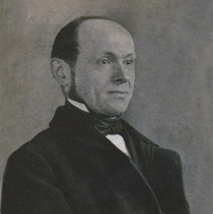Wièse Jules

Wièse, Jules (1818 – 1890)
Wiese, Louis (1852 – 1923)
The gifted Prussian goldsmith enjoys a career in Paris with his skilful historicized works, brooches reminiscent of late-Gothic architecture.
1818 Julius Wiese, later named Jules, is born in Berlin and becomes an apprentice of the Berlin court goldsmith Johann Georg Hossaeur in 1834.
He is considered one of the best goldsmiths of the neo-Renaissance and neo-Gothic periods.
In 1839 Wièse moves to Paris and begins working for Froment-Meurice, eventually becoming the workshop manager. Though opening his own shop in 1844, Wièse continues to work exclusively for his former firm. He receives a medal for his collaboration with Froment-Meurice at the 1849 Paris Exhibition. But by the 1855 Paris Exhibition, held just after the death of Froment-Meurice, Wièse has his own display. A documentation of their relationship, the two dual marked pieces show the close collaboration of the two masters. 1862 Jules Wiese won a gold medal at the London World Exhibition for his jewellery in the Renaissance style. In 1967 Jules Wiese wins a bronze medal for his jewellery in the Archaeological Revival style. These awards lead to many commissions.
In 1880 Louis Wièse, born 1852, assumes control of the firm from his father until his death in 1923. Most items of surviving Wièse jewellery are post-1890 and created by Louis rather than Jules Wiese. Jules often uses his mark ‘JW’ but later both use ‘WIESE’.
In 1890 Jules Wiese dies.
Louis Wiese continues to explore the revival themes used by his father, but also develops modern variations. If gems are used, he inspires himself using antique setting methods. He also masters the antique look of his pieces, often only recognizable by the master mark stamped on the back of the piece.
Wièse, Jules 1818 – 1890
Wiese, Louis 1852 – 1923
Der begnadete preussische Goldschmied macht in Paris Karriere mit seinen kunstfertigen historistischen Arbeiten, an spätgotische Architektur erinnernde durchbrochene Broschen.
Der gebürtige Berliner Jules Wièse geht 1834 bei Johann Georg Hossaeur in die Lehre. 1839 wandert er nach Paris aus, arbeitet für Jean-Valentin Morel und macht im aufblühenden Atelier von François Désiré Froment-Meurice rasch Karriere. 1844 eröffnet er eine eigene Werkstatt mit 25 Angestellten, arbeitet aber weiterhin ausschließlich für Froment-Meurice. 1849 registriert er seine eigene Meisterpunze, die er neben die seines Auftraggebers setzt. Auf der Pariser Weltausstellung gewinnt er einen ersten Preis für den unter eigenem Namen präsentierten Neo-Klassizistischen Schmuck. Als Froment-Meurice 1855 stirbt, übernimmt Wièse kurzfristig die Führung der Werkstatt und vollendet einen Auftrag von Kaiser Napoleon III. In London gewinnt er 1862 die Goldmedaille für seinen Schmuck im Renaissance-Stil. Jules stirbt 1890 und sein Sohn Louis übernimmt die Werkstatt 1895. Er arbeitet weiterhin an historistischen Objekten, modernisiert aber die Entwürfe des Vaters. Er kreiert antik wirkende Stücke mit historischen Details, dekoriert Steine in alten Fasstechniken und bearbeitet Metalloberflächen. Er ist ein Meister des „antiken Looks“, dass manches antik wirkende Objekt erst anhand des Stempel als Wièses Werk zu erkennen ist. Louis stirbt 1923.